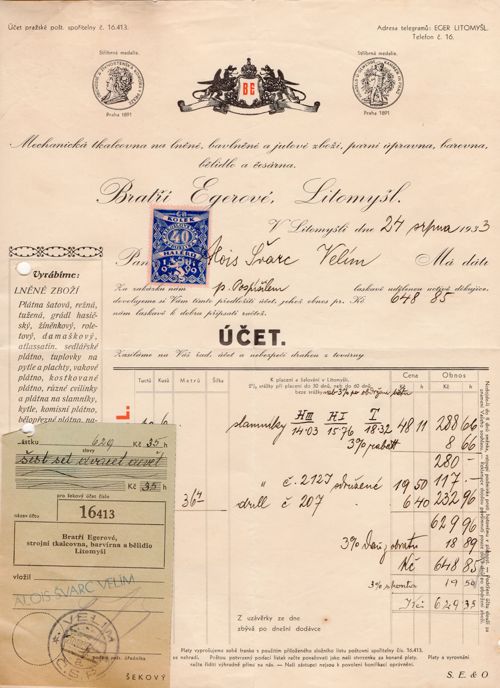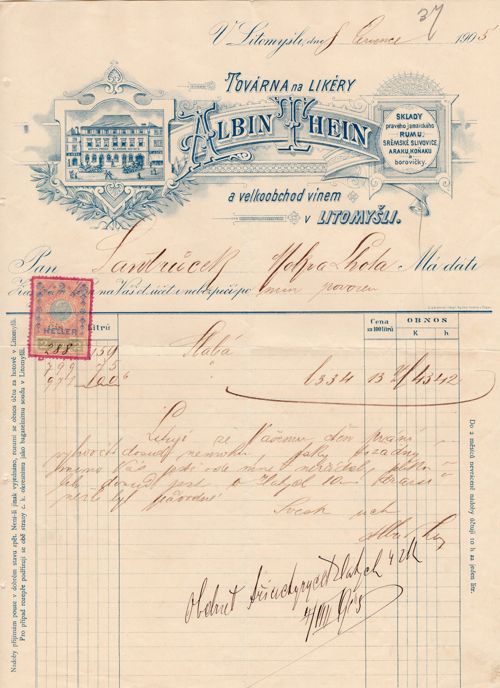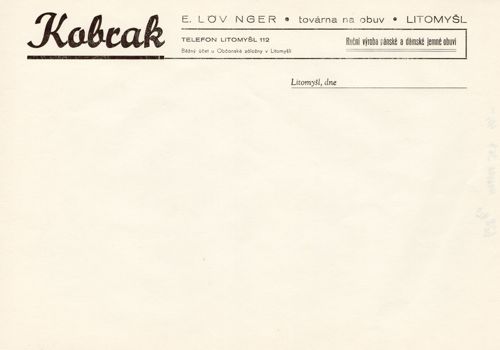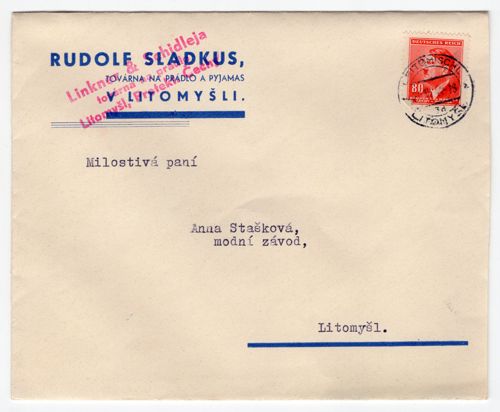Jews in Litomyšl
We do not know when Jews settled down in the territory of Litomyšl. There are several sources, but they differ by about 150 years. What we know for sure is that they did live in Litomyšl at the end of 16th century. As F. Lašek writes in his book ´Litomyšl in History and Visual Arts´ (published in 1945), the hill where the castle was later built had been called the "Jewish Hill". It is said to be named after Salomon and Markus, the Jews who bought their houses there. However, the official name of the hillock, used since the mid 12th century, has been "Mount Olivet".
Our research focused mainly on the 1930s and so we wanted to find out the number of Jewish inhabitants living in Litomyšl at that time. We tried to find out the answer to this question by means of the records about the members of the Litomyšl Jewish Community, since the first minutes of their meetings date back to 1901. According to its rules, members had to be Jews older than 20 and could apply for membership on their own initiative or if somebody recommended them to be accepted into the community. That is to say that membership was optional. When granted, it bound the member to pay regular membership fees, the amount of which was based on his income. The more one earned, the more one paid. Thanks to this record we can estimate the wealth of individual members of the community.
In 1929, a religious tax of CZK16 684 was introduced.. The minutes taken during the meeting of the Allocation Committee include a list of community members together with the amount they paid (see the pictures in this book). There are 50 people from Litomyšl on the list. The majority of them were men and there were only six women. We think that families paid a lump sum and people living alone paid for just themselves. Therefore, this list doesn´t actually help us to find out the number of Jews living in Litomyšl.
Even if we turned to the data kept in the Archive of the Jewish Museum in Prague and reviewed the lists of Jews deported from Litomyšl, we would still not know the right number. The figure of 92 that appears actually only refers to the number of people deported at the beginning of December 1942, when a mass exodus to Pardubice occurred. It did not include, for example, any mixed marriages. Besides that, some Jews escaped the threats of fascism by emigrating (e.g. Jan Finger), others moved away from Litomyšl at the beginning of the Protectorate (e.g. the lawyer Fischer with his family) and others were arrested earlier (e.g. Leopold Eisner).
If we combine the information from the the sources mentioned above and the results of our Project, we could estimate that the number of Jews in Litomyšl in the1930s was about 200.
Jews in Litomyšl lived all over town. Those who were well-off lived in their own houses (e.g. the Sgalls), whilst others rented apartments. There were far more of the latter, but to the best of our knowledge, it isn´t possible to guess how rich people were based on the fact theat they rented apartments.
Most of the families were involved in some kind of trade. The pictures in this book show that if we had taken a walk in the main square before WWII, possibly one third of the shops we would have seen would have belonged to Jews. Jewish shopkeepers enjoyed an excellent reputation in the town. They were very polite and pleasant, they sold their goods on credit and they were able to get any goods and deliver them to the customer´s house.
The Jews in Litomyšl also owned a number of craftsmen's workshops (e.g. the Frieds) and small factories. In some of the factories, there were machines and workmen came to work every day (e.g. the Sladkus Company), whilst other factories employed local workmen (e.g. the Linela Company). Most of the jobs were provided by shoe-making firms (e.g. Kobrak, belonging to Mr. Löwinger and Popper, Löbel, Štolc).
Despite the remarkable wealth of some of the families, the Jews in Litomyšl are described as modest people. They did not distinguish themselves by extravagant clothes or by showing off their luxury and their children did not have the reputation of the "gilded youth".
It should also be mentioned that they did not form any exclusive groups shutting out others. On the contrary, it was usual for Jewish and non-jewish families to have close, friendly relationships and their children made friends without prejudice. However, we did notice one element of Jewish-only co-operation: when a Jew needed money to establish or extend his business, the community helped him with a loan that he had to pay off but which was interest-free.
The religious environment of the little town was also very tolerant. Jewish families celebrated the main Jewish holy days, but they also gave their children presents on the "Day of St. Nicholas" and decorated Christmas trees.
The common feature characterising the Jewish community was its great patriotism. Its members never missed a chance to show their patriotism. For example, even on the Torah holiday, people were waving Czechoslovakian flags, and on 28 October, the Independence Day of the Czechoslovakian Republic, it was a matter of prestige to have a child from the family participating in the celebration parade and carrying a lantern with a portrait of T.G. Masaryk, the President-Liberator, painted on it.
Some anti-Jewish tendencies started to emerge in Litomyšl at the time the Munich Agreement was signed. In the mornings, people used to find Jewish stars and JUDE notices had appeared on walls overnight (e.g. Mrs. Franklová's recollections of the house where her father had his office). Mrs. Skálová told us how her mother had hidden Zdeněk Šolc, a Jewish student from Litomyšl, in the kitchen of her pub in Morašice when he was chased by an over-excited nazist from Litomyšl.
The life of Jews got gradually worse in Litomyšl when the Protectorate of Bohemia and Moravia was established. An endless series of prohibitions and absurd orders (e.g. the prohibition on buying garlic and hats) worried people so much that some of them were relieved when they were told they should be prepared to be moved. It seemed to them that finally a decision had been made. They expected hard times, but believed that the burden of waiting for something unknown and frightening to happen had been lifted (e.g. Mrs. Franklová's memoirs). They had no idea how wrong they were.
On the morning on 2nd December, 1942, having been rounded up with their luggage near the synagogue, all the Jews from Litomyšl (with the exception of three of Mr. Frey's family, who stayed for three more days with him since he was the head of the community) left from the local railway station en route to Pardubice. From there they were sent to Therezienstadt on Cf 486 transport. This was to be the final destination for some of them, whilst others were later transported further east to Auswitz. Only a handful of them were lucky enough to survive the holocaust, often as the only members of their families who did.
They left behind in Litomyšl their houses, furnishings, belongings and memories. They also left two places that have traditionally been connected with Jewishness - the synagogue and the cemetery.
Dagmar Burdová


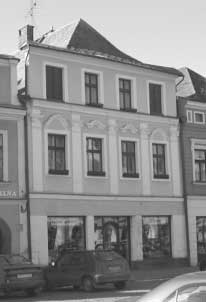
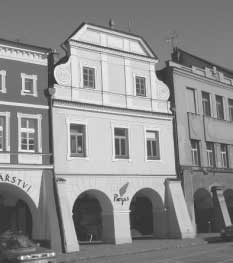
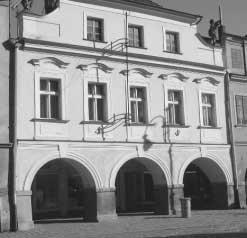
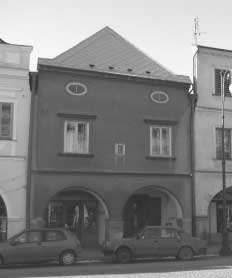
Archive materials added in November 2022 by Dagmar Burdova
Not only the Jews had to renounce their professional status and leave their homes, but they were also evicted from the then district of Litomyšl from the middle of 1942 (today it is the district of Ústí nad Orlicí, but during the war Litomyšl was the district town). The evacuation order was issued by the Litomysl district governor.The last group of Jews was deported from the district on December 2nd, 1942. The transports of these people similarly took place throughout the protectorate, and the Nazis mostly transported them directly to the Polish concentration camp. Their houses and possessions were handed over to the Germans and they were only allowed to take thirty kilograms of luggage with them. Many of them chose to take their lives rather than fall into the hands of the Nazis and go to the camps. For example, former factory owner Jew Sobotka from Kerhartice poisoned himself and his wife before deportation. Their bodies are said to be buried in the local cemetery.
Source: Státní okresní archiv Ústí nad Orlicí, fond Archiv města Ústí nad Orlicí. Pamětní kniha 1937-1946, inv. č. 35/9
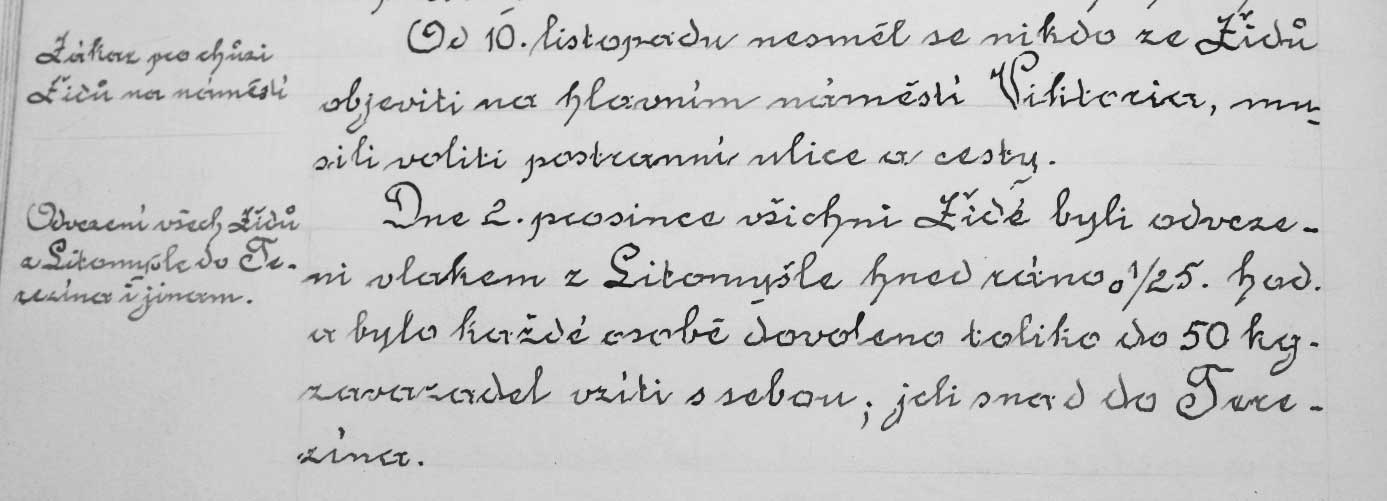
Translation:
Since November 10th no one from Jews was allowed to appear in the main square. They had to choose side streets and roads.
On December 2nd all Jews were taken away by train and each person was allowed to take luggage with them up to 50kilos. We went to Terezin
Source: Státní okresní archiv Svitavy se sídlem v Litomyšli, Mezifondový soubor kronik, sign. KR 27, str. 112
Quotes from the chronicle in ZIP format
Translation:
From September 17, 1941, Jews had to wear a yellow star with the inscription "Jude".
Among the Jewish members, the following were moved out on December 2, 1942:
Source: Státní okresní archiv Svitavy se sídlem v Litomyšli, Mezifondový soubor kronik, sign. KR 28, str. 65 – 69

